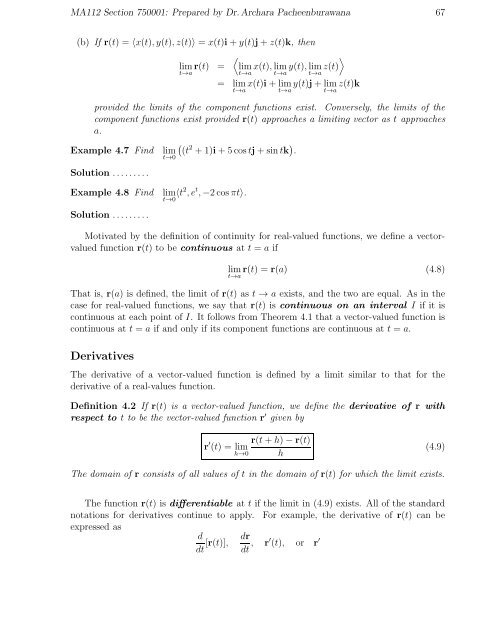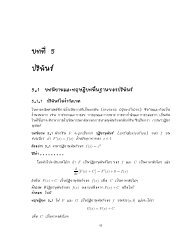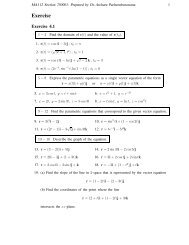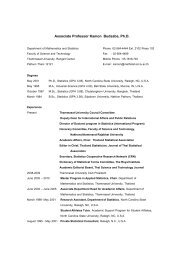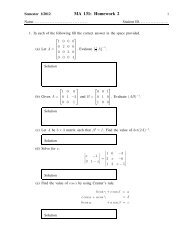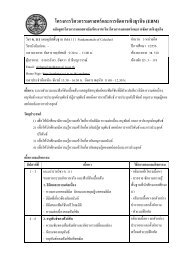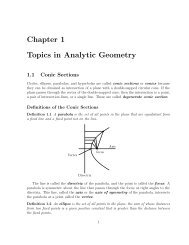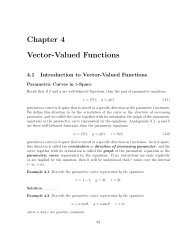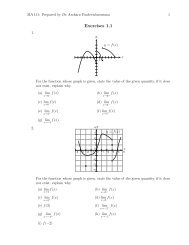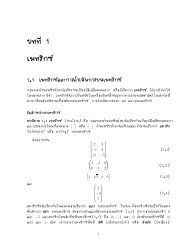Chapter 1 Topics in Analytic Geometry
Chapter 1 Topics in Analytic Geometry
Chapter 1 Topics in Analytic Geometry
Create successful ePaper yourself
Turn your PDF publications into a flip-book with our unique Google optimized e-Paper software.
MA112 Section 750001: Prepared by Dr.Archara Pacheenburawana 67(b) If r(t) = 〈x(t),y(t),z(t)〉 = x(t)i+y(t)j+z(t)k, then〈〉limr(t) = limx(t),limy(t),limz(t)t→a t→a t→a t→a= limt→ax(t)i+limt→ay(t)j+limt→az(t)kprovided the limits of the component functions exist. Conversely, the limits of thecomponent functions exist provided r(t) approaches a limit<strong>in</strong>g vector as t approachesa.Example 4.7 F<strong>in</strong>d limt→0((t 2 +1)i+5costj+s<strong>in</strong>tk ) .Solution .........Example 4.8 F<strong>in</strong>d limt→0〈t 2 ,e t ,−2cosπt〉.Solution .........Motivated by the def<strong>in</strong>ition of cont<strong>in</strong>uity for real-valued functions, we def<strong>in</strong>e a vectorvaluedfunction r(t) to be cont<strong>in</strong>uous at t = a iflimr(t) = r(a) (4.8)t→aThat is, r(a) is def<strong>in</strong>ed, the limit of r(t) as t → a exists, and the two are equal. As <strong>in</strong> thecase for real-valued functions, we say that r(t) is cont<strong>in</strong>uous on an <strong>in</strong>terval I if it iscont<strong>in</strong>uous at each po<strong>in</strong>t of I. It follows from Theorem 4.1 that a vector-valued function iscont<strong>in</strong>uous at t = a if and only if its component functions are cont<strong>in</strong>uous at t = a.DerivativesThe derivative of a vector-valued function is def<strong>in</strong>ed by a limit similar to that for thederivative of a real-values function.Def<strong>in</strong>ition 4.2 If r(t) is a vector-valued function, we def<strong>in</strong>e the derivative of r withrespect to t to be the vector-valued function r ′ given byr ′ (t) = limh→0r(t+h)−r(t)h(4.9)The doma<strong>in</strong> of r consists of all values of t <strong>in</strong> the doma<strong>in</strong> of r(t) for which the limit exists.The function r(t) is differentiable at t if the limit <strong>in</strong> (4.9) exists. All of the standardnotations for derivatives cont<strong>in</strong>ue to apply. For example, the derivative of r(t) can beexpressed asddt [r(t)], drdt , r′ (t), or r ′


